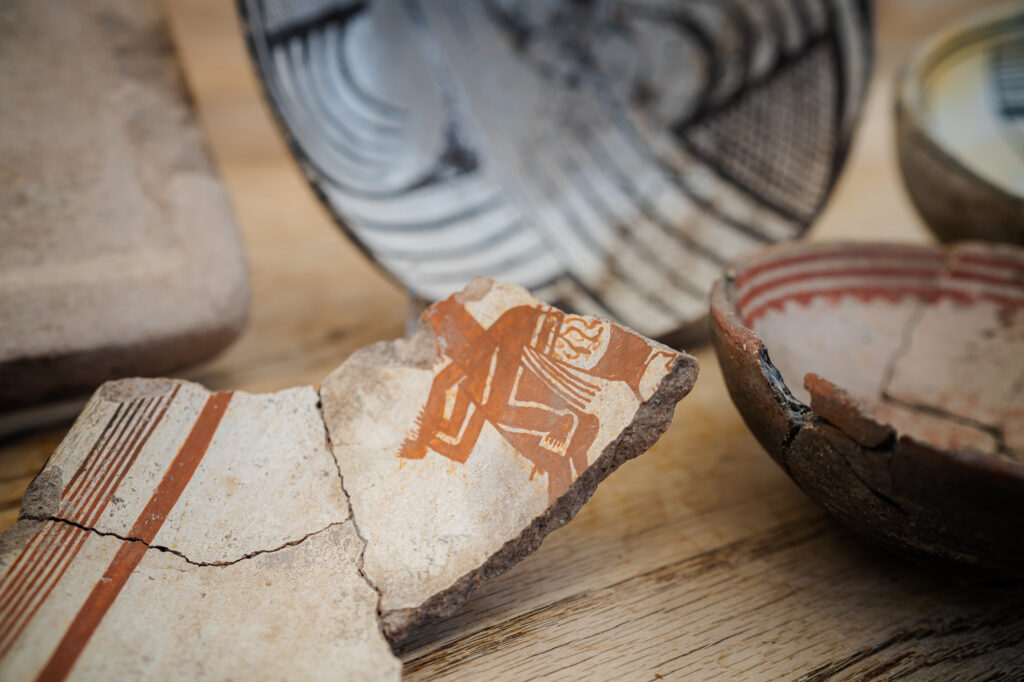

The WNMU Museum has been given a new collection of pottery and other artifacts, the Disert Ranch Collection, which is now on display. The materials come from a site that was heavily looted during the 1930s.
SILVER CITY – The WNMU Museum has recently acquired a new collection of Mimbres Mogollon artifacts, the Disert Ranch Collection. The collection comes from a pueblo in the Mimbres Valley on land that was owned by the Disert family starting in the 1970s. The collection was donated by members of the family.
The objects in the collection were found at the Perrault site on the family’s property. In the early twentieth century, Mimbres ruins were often excavated by collectors untrained in archeological methods, and that was what happened at the Perrault site. The pueblo had been heavily looted during the 1930s, said WNMU Museum Director Danielle Romero. When the Disert family moved onto the property in the 1970s, they collected the artifacts left behind in the disturbed areas.
The fact that the site had been looted is reflected in the kinds of pots that are part of the collection. “We are not seeing a lot of figurative items [among the artifacts donated to the museum], because that would have been the market in the 30s,” she said.
Romero can date when the site was looted due to a unique artifact left at the scene, a memorial stone commemorating the excavation, dated June 1939. The memorial, which includes the name and address of the pot collector, reveals a great deal about how attitudes have changed, said Romero. “It gives insight into the mentality of some of these early looters,” she said, “There was definitely a sense of pride about what they were doing.”
Today, any excavation of a Mimbres pueblo, whether on public or private land, would be governed by the Native American Graves Protection and Repatriation Act, which makes it a felony to disturb grave sites.
According to Romero, most of the pieces in the collection are from the Mimbres Classic Era, circa 950-1130 AD, with a few earlier items. The collection includes approximately 50 ceramic pots as well as other artifacts.
Apart from the memorial, there are several other unusual pieces in the collection, including a large stone palette. What makes this item unusual, said Romero, is partly its size, as Mimbres palettes are usually smaller, but also the fact that there is no paint residue evident on it, making it unclear what the palette was used for.
Finding such unusual pieces and new designs is part of what makes any new collection exciting, said Romero. As an example, she pointed to a broken pot with a depiction of a person carrying another person over their shoulders. “This is not a design we see,” she explained. The pot raises a lot of questions, she said, and the mystery is even more provocative because so much of the pot is missing. “What would have been on the rest of this?” she mused.
The Disert Ranch Collection is on display on the 2nd floor (lower level) of the WNMU Museum.




